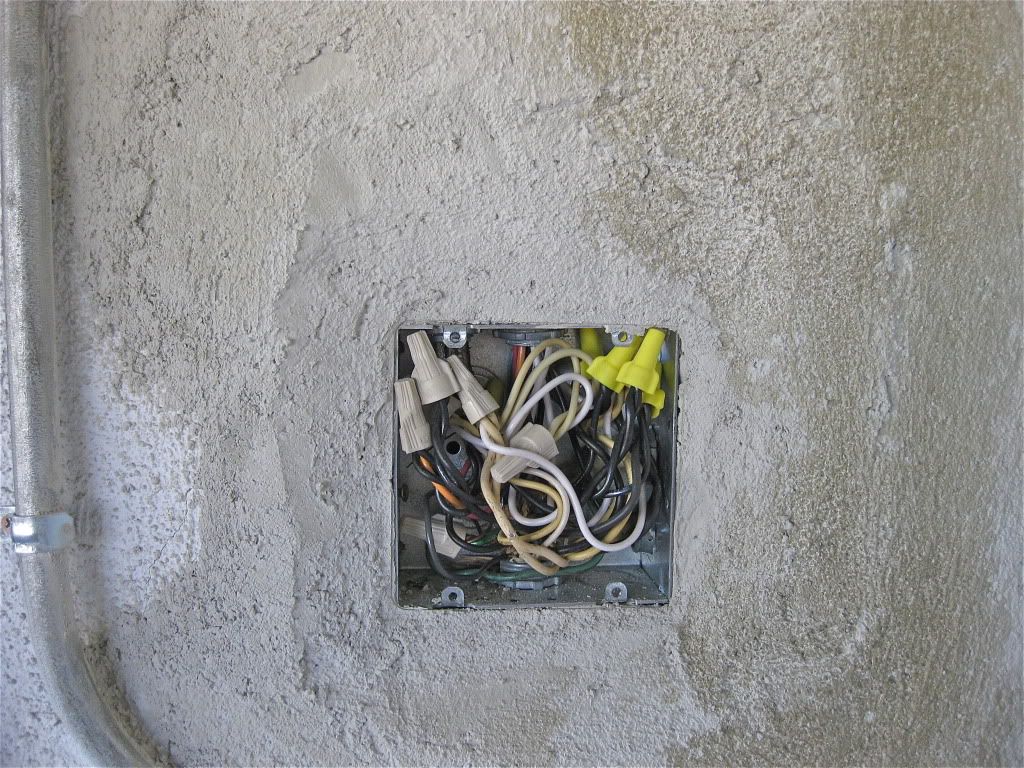mallet to get it all in there, perhaps it's too full. This was one conductor shy of double the capacity.


Your premier resource for building code knowledge.
This forum remains free to the public thanks to the generous support of our Sawhorse Members and Corporate Sponsors. Their contributions help keep this community thriving and accessible.
Want enhanced access to expert discussions and exclusive features? Learn more about the benefits here.
Ready to upgrade? Log in and upgrade now.

Mule, Yes I do know about the "back of the IRC cross referencing", but some of the lurkersand less knowledgeable folks on here may not."Did you know there is a cross reference in the back of the IRC that specifies what section of the NEC and the IRC is?"
I don't know if I'm the best one to help you out...but yeas based on the table and your guesstimation of conductors I would say you are correct.Pcinspector1 said:Mule, Help me with this,There appears to be 9 wire nut splices and if they are all 14ga wire? that would be 9-nuts x 3conductors(estimated per nut)=27 total conductors x (2.00 cu in. per 14awg conductor)= 54 cu in of box required? Does that look correct?
If the box is a 4x4x2= 32 cu in, the box is overloaded by 22 cu inches. Close?
pc1
I believe that the box is a 4 11/16 X 2 1/8" box. With that being said the CU inches would be 42. Now not all the wire nuts have 3 conductors in them some have 2 so it is hard to guess the number of wires. Also as pointed out the equipment grounds only count as one conductor.Pcinspector1 said:Mule, Help me with this,There appears to be 9 wire nut splices and if they are all 14ga wire? that would be 9-nuts x 3conductors(estimated per nut)=27 total conductors x (2.00 cu in. per 14awg conductor)= 54 cu in of box required? Does that look correct?
If the box is a 4x4x2= 32 cu in, the box is overloaded by 22 cu inches. Close?
pc1
They installed an appropriate size j-box. I wasn't the follow up inspector. What isn't obvious from the picture is that the box is recessed from the surface of the stucco 1/2", so that was corrected also. The dwelling was owned by a bank and the work was done by a licensed contractor. There were many violations and I was surprised that the work passed on the next inspection.globe trekker said:Mule, Yes I do know about the "back of the IRC cross referencing", but some of the lurkersand less knowledgeable folks on here may not.Just trying to assist in the education
process. And, BTW, thanks for the code references ya'll, ..Jar will be proud of us!
I'm wondering what did ICE / Tiger do to obtain compliance of this obviously overloaded
junction box..
I use the eyeball method. If it looks too full, I tell them it's too full. Sometimes they tell me that I'm full of it. I say, could be, but not as full as the box. They ask how many can they have. I tell them that I don't know but it's written down in a book somewhere and it's not as many as they have because it looks too full.Pcinspector1 said:globe, great question, Frank great answer.
ICE, Thanks for the PIC, I agree it looks overloaded and it's for sure a violation.
How do you determine the box cu inch allowable fill? Is that type box marked where you can see it?
pc1
